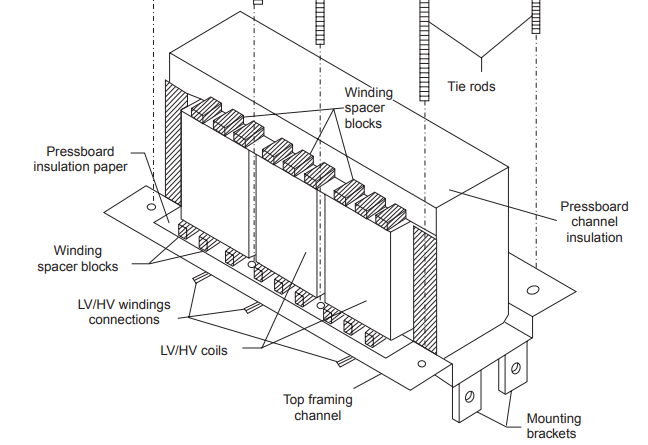
Excitation Current Test on Power Transformers
Transformer excitation current test is usually considered as a useful diagnostic tool that can be performed often with the same equipment that can perform power factor or dissipation factor test.
This test is relatively simple one and the main idea is to manipulate the transformer under test into the state of no-load condition ( open circuit) , clearly meaning injecting voltage into the primary winding while the secondary winding and the tertiary if applicable are left floating , thus the magnetization current can be measured and any distortion may be observed. For comparison purposes ,10KV applied voltage had been standardized as the excitation current measured values are voltage-dependent.
The test is conducted by applying voltage to one end of the primary winding and connecting the other end with the lv lead of the PF / DF test set in the UST mod and this will be the same for each different phase of the winding.
The test connection methods are usually provided with the test equipment manual as similar to the next figures and it should be noted that if the secondary winding is a star-connected winding , its neutral is left grounded as in normal service. Also this test should not be performed after DC winding resistance measurements and it usually a good practice to put DC-WRM as the last test on the testing schedule , otherwise demagnetization of the core is required to avoid any misleading results due to residual magnetism.
Interpretation of this test is usually done by analyzing the patterns of the measured values of excitation current on each phase.As 3-leg core type transformers are the most popular , High –Low – High (HLH) pattern is the expected pattern but will reverse into Low-High-Low (LHL) pattern in case of the primary is delta- connected winding and the third terminal of the primary delta-connected winding is not grounded. HLH pattern is also expected for shell type or 5-leg core type transformers if they have a delta connected secondary winding , if not the expected pattern should be of “ all similar” pattern.
This test is sensitive to detect problems related to the core ( as shorted laminations) as well as to the windings , such as turn to turn faults. The two outer phases should have similar values within 5% while the middle phase can differ up to 30 %. Normally if a fault is existed that means higher current will be drawn due to the opposing flux created by the fault. More investigations are usually required when the results are not met the expected patterns and depending on the extent of pattern distortion , collecting more information will help by performing more electrical- based tests for a better diagnosis to be reached ,by classical tests such as TTR and DC-WR and particularly SFRA will be useful when a fingerprint test result is available , so at low and mid frequencies such problems related the core and windings respectively can be observed .



Project | Maintenance | Service | Transformer | OLTC | Switchgear | Genset | LV Panel | Solar Panel | EV Battery | EV Charger | CCTV | Access Control |
3yGood article.👍